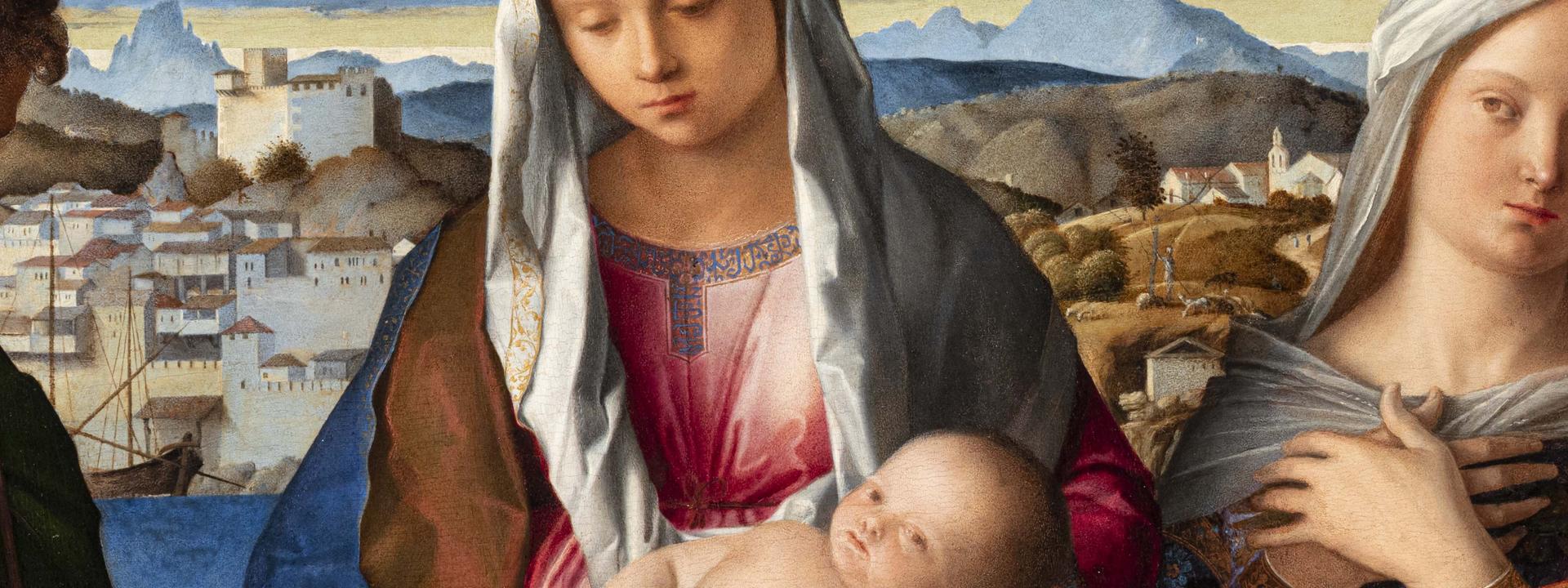Temporary display
This work entered the Gallerie in 1926 following an agreement between the Italian state and prince Giovanelli. Undoubtedly one of Bellini’s masterpieces, it dates back to the early sixteenth century and the background shows a significant departure from his earlier work, the result of Giovanni Bellini’s investigations into landscape from the 1460s. The maritime landscape shines in the midday sun with glints of silver, and a collection of similar squat dwellings leads the eye towards the horizon and the sharp peaks of the Dolomites. Within a confined space, the clever use of colour describes a very distant horizon, indicated by a rapid succession of bands of colour, the cold outline of the mountains, the clear strip of light, and then the use of varying shades of blue for the sky. Some scholars suggest that significant features of the landscape allude to Mary’s virginity, such as the fortress standing alone on the hilltop, the “safe haven” where a ship is arriving, or even the walled city itself (Gentili). Today experts generally agree that it was painted in the very early years of the sixteenth century as the figure of Saint John is repeated exactly in Andrea Previtali’s Mystic Marriage of Saint Catherine, dated 1504 (London, National Gallery).




